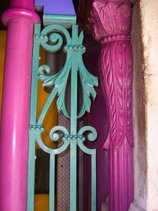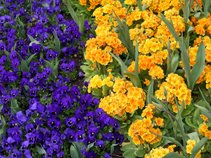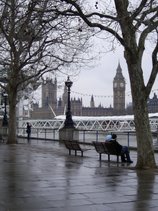Is Tarot reading a complete waste of time? Do Tarot readers exploit the naive and superstitious? To answer those questions we must have some understanding of Tarot reading.
A Tarot deck consists of 78 cards, which is divided into 22 Major Arcana and 56 Minor Arcana.
The Major Arcana are numbered 0 to 21. Number 0 is the Fool, No. 1 the Magician, No. 2 High Priestess. . . through to No.21 the World. Each card has its own meaning, take for example No.13 Death.
People fear seeing the Death card in their reading but the card doesn’t signify an immanent death. It represents: transformation, change (voluntary or involuntary), ending (but with ending a new beginning).
The Minor Arcana are divided into 4 suits: Swords, Wands, Cups and Pentacles. Unlike a conventional deck which has 13 cards per suite, the Tarot deck has 14. There is the normal ace to 10 cards and four picture cards: King, Queen, Page and Knight. The suits are:
SWORDS - represents action, progress - either good or bad, ambition, opposition and strength. They generally indicate there is, or will be a problem which requires action. They can also often indicate health concerns or problems.
WANDS- represent challenge in all its forms. They correspond to the fire element. The appearance of wands in a spread means creativity, progress and growth through negotiation. Wands are generally optimistic cards but do not show the easy route.
CUPS - are associated with anything emotional, from marriage to personal possessions and concerns, which also covers anything related to partnerships, whether in our work or personal context.
PENRACLES - the suit of possessions and financial matters.
What is seen in the cards are trends and possibilities, rather than definite solutions or events. In addition each card is shrouded in ambiguity. Take for example the first Major Arcana card the Fool:
The classic Rider-Waite deck shows a young man standing at the edge of a cliff. The sun is shinning. The Young man looks as if he doesn’t have a care in the world. He is looking upwards and not where he is going. He wears brightly coloured cloths, with a feather in his hat. He has a flower in his left had, while holding a stick in his right which rests on his shoulder, his belongings are wrapped in a cloth tied at the end of the stick. A little dog jumps up at his feet.
What does the card signify? He is standing at the edge of a cliff and his head is turned upwards. Does that mean he isn’t looking where is walking and he is soon going to encounter a disaster? Or has he viewed from the cliff edge the world laying before him, and is now pondering his options before taking the next step? Does the little dog represent a warning, or is the dog a companion equally excited and not looking where it is going? So many ambiguities and options. And that is the secret of Tarot definition.
A good reader just describes the cards, listing the options, and then listens to the subject’s responses. If the Fool is the first card in the first column of a spread, representing the subject past, the subject could see his/her self as a fool or an optimist. Did they in the past walk blindly into disaster or after reviewing options plan a route?
Tarot cards are very sophisticated ink spot diagrams, which are used by psychologists. The cards are just pieces of cardboard they do not possess any magical power, they cannot predict the future. They can however, be used by skilled practitioners, to assist the subject to: gain an insight into their own psychology, their reactions to past events, their desires and fears.
Mumbo-jumbo? Yes when practiced by charlatans and fools.
Subscribe to:
Post Comments (Atom)
















No comments:
Post a Comment